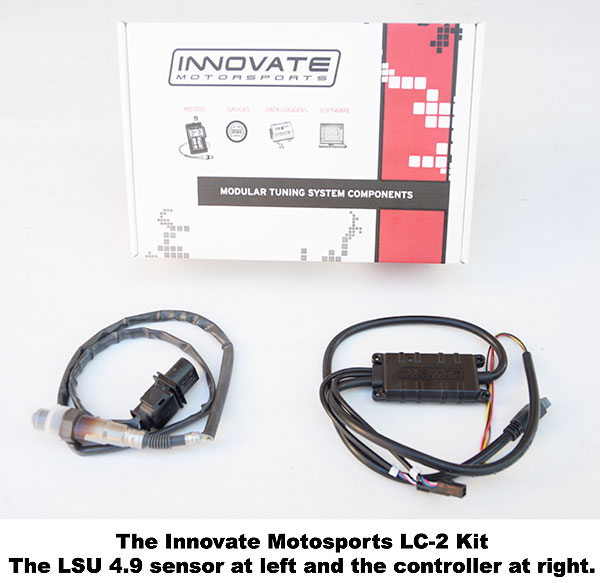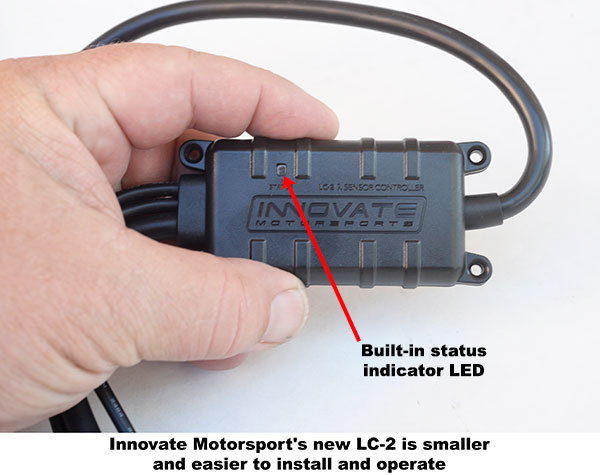Product Review: Innovate Motosports LC-2 Wideband O2 Sensor Kit
Summary
The LC-2 is a worthwhile and welcome upgrade to Innovate Motorsport’s entry level wideband oxygen sensor.
User Review
( votes)If you do “tuning” or “calibration” work, or just “cal”, as some car company engineers say, undoubtedly, you are working with a wideband oxygen sensor (or WBO2S). At the V-Net’s sister site, the Corvette Action Center, for the last four years, when we have done cal work, we’ve used an Innovate Motorsports LC-1 Wideband O2S kit. With the Corvettes which we’ve tuned–a 2004 Z06 and a 2012 Z06–the LC-1 has performed very well. We’ve also found Innovate Motorsports customer support to be responsive problem solvers. A few months after we put the LC-1 in service, we began to see some unusual readings. One phone call to Innovate’s Felipe Saez to give him a brief description of our troubles resulted in his asking us to return the unit. A few days later, a new LC-1 arrived at our doorstep and has been in service ever since–right up until a few weeks ago when, in preparation for some tuning work we are going to do with the V-Net’s ATS-V project, we replaced it with Innovate’s current offering in the market, the LC-2.
For us, the advantages of upgrading to the LC-2 were two. First, Innovate Motorsports specifies the Bosch LSU4.9 wide band oxygen sensor for use with LC-2s, whereas the LC-1 used the Bosch LSU 4.2. The 4.9 is a more robust design which makes it more durable. The major difference between a 4.2 and the 4.9 is the latter uses a reference pumping-current whereas the LSU 4.2 uses reference air. In the original Bosch wideband sensor, a “reference air cell” provided a reference to stoichiometric air:fuel ratio. The system kept the pumping cell balanced with the reference air cell, by pumping the oxygen out of the pumping cell. The pumping current flow was the indication of the amount of oxygen in the exhaust gas. The bigger the pumping current, the more the oxygen in the exhaust, and vice versa. Therefore, the reference air was vital to the accuracy of the sensor.
This idea worked well in the lab but not so good on the road. Because the environment around the oxygen sensor on an engine in a vehicle. The reference air cell was susceptible to contamination by the exhaust gas or other pollution such as fuel or oil vapor. Once the reference air was contaminated, the sensor signal became inaccurate. This was the biggest problem of LSU 4.2. To fix this problem, Bosch redesigned the LSU sensor and came up with version 4.9. The 4.9 sensor eliminated reference air. Instead, it used a reference pumping current which was equivalent to the reference air, but without having any physical air in the cell. In the 4.9, the actual pumping current was compared to the reference pumping current to maintain the balance. The pumping current flow was still the indication of AFR, but the reference was a calibrated electrical signal and stayed same all the time. The Bosch 4.9 eliminates reference air which was the 4.2’s biggest failure mode. LSU 4.9 sensors typically last longer and maintain accuracy throughout their lives.
The second advantage of switching to the LC2 is that Innovate Motorsports has made the LC-2 easier to install and operate. No longer is the controller required to be near the sensor. In most cases, this allows the LC-2 controller to be moved into the vehicle interior. Also, no longer is periodic reference air calibration required because the LC-2 no longer uses the LSU 4.2 sensor and its reference air cell. The only time any calibration is necessary is if a new sensor is installed. The LC-2 controller has an LED status light built into it whereas, the LC-1 required the user to supply a status light and fabricate its writing harness. The LC-2 has two analog outputs which are used by data logger interfaces accepting only analog inputs. It also has a serial output for an interface which supports a connection to a laptop with a serial port.
The LC-2 is a worthwhile and welcome upgrade to Innovate Motorsport’s entry level wideband oxygen sensor. For more information, visit the Innovate Motorsports web site.
Click on the images below for an expanded view:



